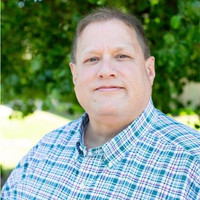Top-Level Takeaways
- Listerhill introduced the high-performing teams concept in 2019 to better implement its strategic directives. High-performing teams is an organization development concept in which a tight-knit group of employees with complementary skill sets align around a clearly-defined common goal.
- High-performing teams, working toward solutions on everything from cost savings to core values.
By 2025, Listerhill Credit Union ($865.0M, Sheffield, AL) wants to be known as the credit union that provides the best member experience.
Not a good experience. Not even a great one. The best experience.
It’s an audacious goal that has forced the cooperative to reassess strategy, operations, and more.
One way the credit union is working toward its goal is by developing a focused strategy dubbed The Forge Strategy that speaks to culture as much as to financial performance. It also has established a team whose sole focus is to internally disseminate strategy updates. And, the cooperative is educating its entire employee base some 250 people about how their day-to-day work impacts the entire organization.
Operationally, Listerhill has implemented high-performing teams an organization development concept in which a tight-knit group of employees with complementary skill sets align around a clearly-defined common goal. These teams have the knowledge and power to overcome barriers and achieve results quickly.
A High-Performance Launch
Listerhill partnered with Randy Harrington’s Strategic Arts & Sciences consultancy to launch high-performing teams in early 2019. In addition to providing a fast track to goal attainment, the teams provide development opportunities for employees as well as a role in shaping the future of their credit union.

“We want to share our strategic vision and plan with as many employees as we can,” says Alanna Sullivan, Listerhill’s chief people officer. “By putting them in the middle of it, we hope it becomes real for them.”
For its first round, the credit union established five high-performing teams that each had a sponsor from senior leadership. Sponsors, in turn, were responsible for identifying talented, driven employees to serve as team leads. According to Sullivan, the credit union looked for people who were well respected, inclined to lead, and could create excitement around the team’s contribution to the strategic plan. Ultimately, these leads were mostly middle managers hailing from departments as varied as human resources to security with leadership skills and wide professional networks.
The first round of high-performing teams included:
- Divas Driving Data: This all-female team was tasked with evaluating data points across the credit union and working with IT to begin the building of a data warehouse.
- Loss Banditos: This team was tasked with improving loan quality, as the credit union had recently transitioned to centralized underwriting and subsequently tightened underwriting standards.
- Kicking Assets: This team was tasked with reviewing product and service offerings through the lens of meeting needs and improving overall satisfaction.
- CARECAST: This team was tasked with identifying ways Listerhill’s core service experience standards could better align with its values and vision statement, as well as seek opportunities to utilize employee authority and engagement within those standards.
- Budget Brigade: This team was tasked with reducing operating expenses.
The Teams Work
The five high-performing teams each had a directive that correlated with one of the four quadrants member experience, safety and soundness, growth, and culture that comprise the credit union’s new Forge Strategy. For example, the credit union tasked one team Kicking Assets with reviewing products and services to ensure they met member needs and drove member satisfaction.
As part of a high-performing team, members had to maintain a strict timeframe for work, with teams getting either 90 or 180 days depending on the complexity of the goal. Within that window, teams worked as collaboratively as needed and met regularly to report progress or troubleshoot issues.
While the teams worked, sponsors were available to offer organizational resources, but, ultimately, teams had the freedom to work independently.
The lead determined how much a sponsor needed to be involved, Sullivan says. Sponsors were available as a resource if the team hit a roadblock or needed to brainstorm an idea.
At the conclusion of the work period, the teams submitted their final solutions or recommendations to their sponsors. Sponsors, then, decided what to approve and what the team needed to continue working on. For example, Kicking Assets recommended launching a new money market account and revamping the Listerhill mobile app to include additional functionality; big changes for which the credit union will need to plan.
Improvements to the app functionality directly affect the overall member satisfaction from an ease-of-use standpoint, Morgan says.
How To Eat An Elephant
Listerhill applied the insights it learned from its first round of high-performing teams to its second round, which started in June 2019. Directives are still based on its four-quadrant strategy, but five teams became three and sponsors delivered more narrowly focused directives to leaders.

Sullivan recognizes the credit union set large, broad goals in its first round, tasking teams to improve products, services, the member experience, and core values.
“We challenged them out of the gate,” the chief people officer says.
However, Sullivan is quick to point out that the teams stepped up and exceeded expectations.
“I think they even shocked themselves,” she says.
Even with demonstrated success, tasking high-performing teams to produce big change within a short window is no small feat. Listerhill looks for those who are up to the challenge, but it’s improving their chances to achieve their goals by more narrowly defining directives from the start.
“We learned to keep the goals tighter,” Clay Morgan, chief of staff operations, says. “If you are going to try to eat an elephant, the way to do it is one bite at a time.”
Thus far, Listerhill has deployed two rounds of high-performing teams and plans to continue the approach in the coming years. The credit union’s current strategic plan stretches into 2025, but it hasn’t yet formulated directives that will help it achieve that vision. When it does, the credit union has a high-performing tactic to implement them.
“This is not a short-term effort,” Morgan says. “We hope high-performing teams will be with us forever.”
BEST PRACTICE: FIND NEW PERSPECTIVES
High-performing teams develop future leaders. They also introduce new perspectives into operational processes. “Staffing teams with employees from across the credit union helps Listerhill understand how decisions affect different areas of the organization,” says Sullivan. “Often, these employees are the only ones who can provide such perspectives because they are the ones living it every day.”
Sponsors and leads reviewed the team’s strategic directive, and, together, they invited nine additional interested employees from across the credit union to join the team. The entire group then met for a kick-off meeting in which sponsors and leads introduced the high-performing team concept and the team formalized a team charter (a statement defining its directive) and team name.
The charter is where they set their direction and develop a plan of action for how they will achieve the goals set for them, Sullivan says.